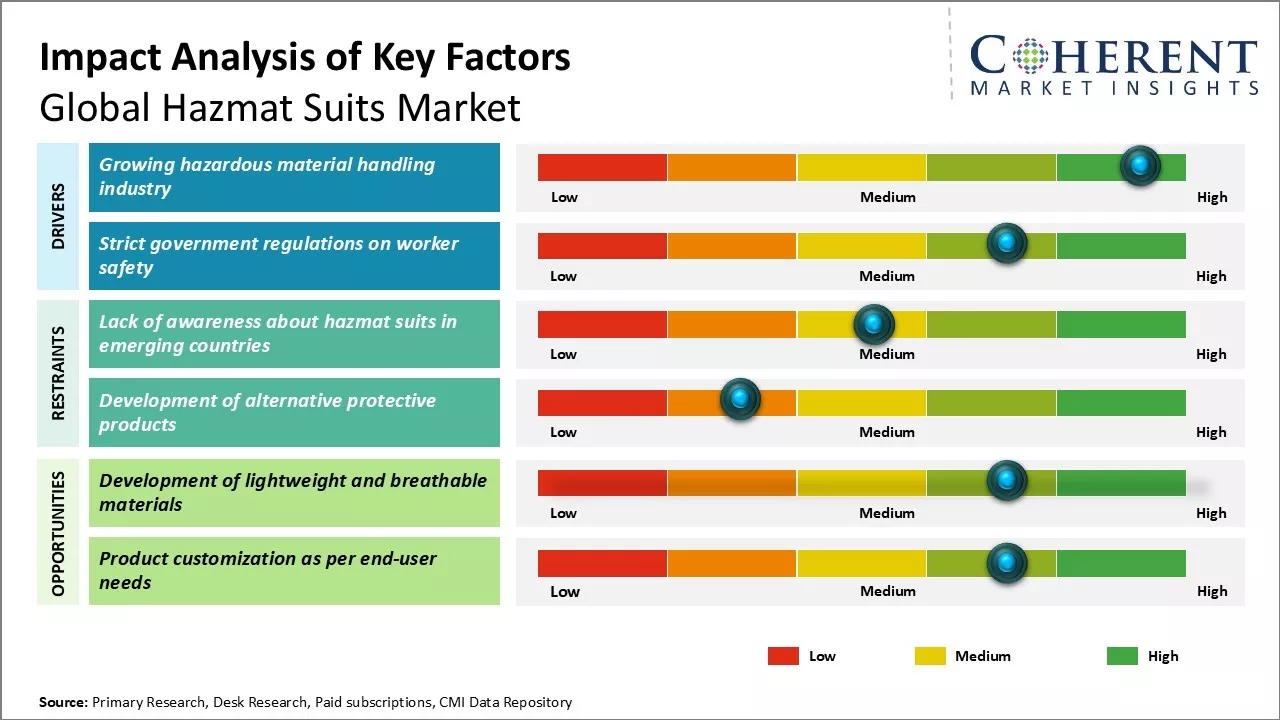Global hazmat suits market is estimated to be valued at US$ 8.59 Bn in 2025 and is expected to reach US$ 13.98 Bn by 2032, exhibiting a compound annual growth rate (CAGR) of 7% from 2025 to 2032.

To learn more about this report, Request sample copy
Increasing awareness regarding safety at workplaces across various industries and rising number of hazards and risks boosts demand for protective clothing including hazmat suits. Growing petrochemical and pharmaceutical industries worldwide also boosts the need to protect workers from harmful and toxic materials, thus, driving the hazmat suits market growth. Major players in the hazmat suits market are investing in research & development to develop advanced fabric for suits that provide higher protection along with proper movement and comfort. Introduction of technologically advanced products equipped with features like communication devices, biomonitoring, and head protection can drive the hazmat suits market growth in the near future.
Market Driver - Growing hazardous material handling industry
The hazardous material handling industry has been witnessing growth over the past few years due to increasing industrial and commercial activities. A wide range of industries such as chemical and petrochemical, pharmaceutical, oil and gas, mining, nuclear, and others routinely deal with toxic, reactive, flammable and hazardous substances. With expanding operations of these industries worldwide, there has been increase in requirements for specialized protective equipment and gears for workers handling hazardous materials.
Hazmat suits have become an integral part of daily operations and safety protocols for numerous companies involved in production, transportation, storage and usage of dangerous chemicals and substances. These full body protective suits are designed to create a reliable barrier between the user and surrounding hazardous environs, and are made using multiple layers of specially engineered materials like Tyvek, laminated polyamide, and GORE-TEX. These provide 360-degree protection from chemicals, vapors, mists and particles through their seam-sealed design and completely cover the wearer's body, head, hands and feet.
Especially in emerging markets, there has been huge investment in industries that involve handling of hazardous materials. For example, the construction of new oil refineries, petrochemical plants and chemical manufacturing hubs has accelerated in countries across Asia Pacific and Middle East regions. This boosts demand for personal protective equipment (PPE) including hazmat suits from such markets. Mining operations are scaling up significantly in major economies like China, Brazil and Australia, and this has boosted the requirement of protective clothing for workers dealing with toxic mining chemicals and waste materials.
With growing complexity of industrial operations, there has been increase in hazards posed by chemicals. Accidents and exposure to hazardous materials continue occurring at workplaces despite safety protocols. This has made compliance to protective gear regulations more stringent to prevent any such untoward incidents. Companies are procuring advanced hazmat suits offering maximum protection rather than compromising on worker safety. Therefore, expansion of industries routinely using hazardous materials along with greater investments in worker protection can drive the growth of the global hazmat suits market in the near future.
Joining thousands of companies around the world committed to making the Excellent Business Solutions.
View All Our Clients